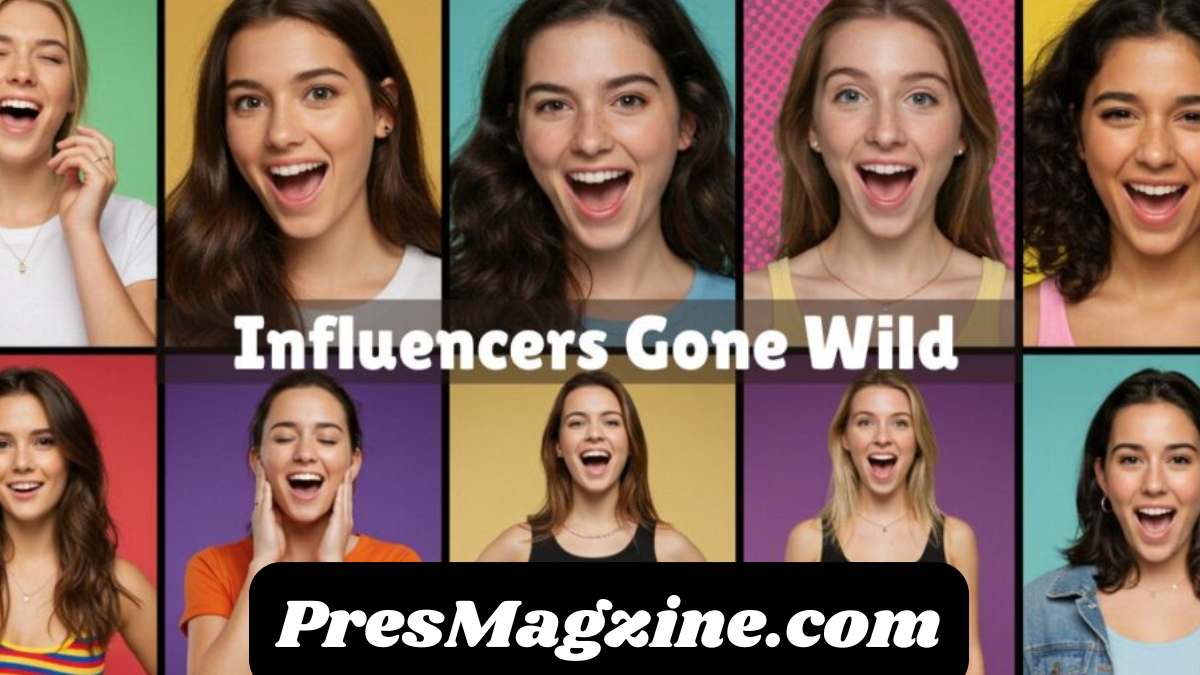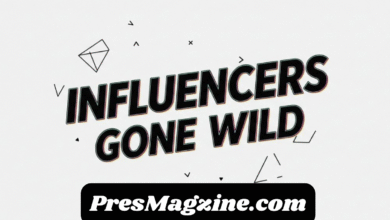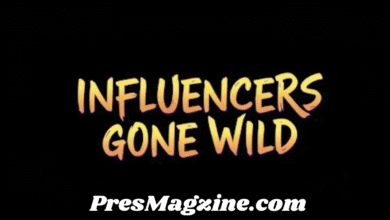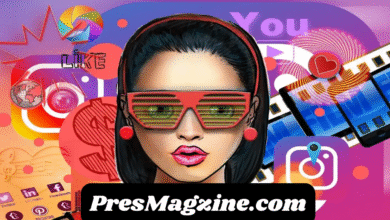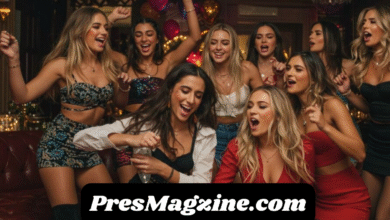The term “influencers gone wild” captures a phenomenon that has rapidly grown within the internet age. While influencers were initially celebrated as modern icons of digital entrepreneurship, creativity, and relatability, a growing pattern of erratic behavior, controversy, and ethical breaches has started to tarnish this reputation. This article takes a deep dive into how influencers have transitioned from admired online personalities to controversial figures and what this shift means for the future of digital culture.
The Origin of Influencer Culture
The word “influencer” didn’t always carry its modern social media weight. Before the explosion of platforms like Instagram, TikTok, and YouTube, influencers were primarily bloggers and thought leaders in niche communities. Their reach was limited but deeply impactful. They influenced through expertise and trust rather than virality and algorithmic luck.
As social media became omnipresent, so too Influencers Gone Wild did the concept of influencers. With millions of users congregating on visual platforms, a new era of self-made celebrities emerged. Suddenly, anyone with a smartphone and a camera could amass a following and monetize their personality. Brands quickly caught on to this potential, creating a booming industry around sponsored posts, affiliate marketing, and collaborations.
The Psychology Behind Influencer Fame
Part of what makes influencer culture so compelling is its accessibility. Unlike traditional celebrities, influencers present themselves as “just like us.” They share personal moments, struggles, joys, and failures in real time. This created a parasocial relationship between influencers and their followers—a one-sided bond where fans feel emotionally connected to someone who doesn’t know they exist.
However, this dynamic also fosters unrealistic expectations. Influencers are expected to be authentic yet flawless, relatable yet aspirational. This contradiction often pushes them to perform at extremes to maintain relevance and attention. The pressure to stay viral, gain likes, and outshine peers drives many to increasingly provocative and sometimes reckless behavior.
Viral Fame and the Pursuit of Controversy
The phrase “influencers gone wild” often refers to those who cross the line in their quest for fame. These incidents range from inappropriate pranks, insensitive cultural behavior, and public feuds to illegal acts caught on camera. Controversy, it seems, guarantees attention. In a saturated space, some influencers intentionally stir drama or create shocking content to differentiate themselves.
Many platforms reward engagement metrics—likes, shares, and comments—regardless of the sentiment. This means that even negative publicity becomes a currency for growth. The algorithm doesn’t distinguish between ethical content and scandal; it promotes what’s popular. Some influencers exploit this by leaning into the very behaviors that provoke public outrage.
The Role of Cancel Culture
As influencer missteps became more frequent, so did the response from audiences. Enter cancel culture—the practice of withdrawing support from public figures who have said or done something offensive. While originally a tool for accountability, cancel culture often operates in extremes, leaving little room for growth, apology, or redemption.
For influencers, the stakes are high. One misstep can cost them brand deals, sponsorships, and entire platforms of income. While some bounce back stronger, others see their careers end overnight. The phrase “influencers gone wild” is often accompanied by a digital reckoning as fans, brands, and platforms pull away from the individual involved.
Case Studies in Outrage
Several influencers have made headlines for actions that sparked massive backlash. From dangerous public stunts and offensive jokes to tone-deaf luxury hauls during global crises, these moments have fueled public frustration. Often, the issue lies not just in the act itself, but in the influencer’s response—or lack thereof.
Apologies that seem insincere, delayed, or defensive often make matters worse. In contrast, influencers who acknowledge mistakes, take accountability, and show genuine efforts to change sometimes regain public trust. Nevertheless, repeated instances of “influencers gone wild” continue to saturate headlines, making it harder for any one apology to seem credible.
The Influence of Money and Power
A major driving factor behind influencer misbehavior is the rapid influx of wealth and fame. Many influencers achieve success at a young age, often with little preparation for the responsibilities that come with it. The sudden transition from anonymity to celebrity can be disorienting. Combined with lucrative sponsorships, VIP treatment, and online adoration, it creates a heady environment ripe for impulsive choices.
Access to fame without the traditional guardrails of media training or public accountability can lead to poor decision-making. Influencers sometimes believe they are invincible, especially when their behavior previously earned them attention or praise. This belief can lead to reckless actions, fueled by ego and reinforced by sycophantic fanbases.
Platforms and Their Complicity
Social media platforms play a major role in the rise of problematic influencer behavior. These digital spaces are designed to prioritize engagement above all else. The more shocking or emotional the content, the more likely it is to go viral. While platforms have made some attempts at moderation and content warnings, the enforcement is often inconsistent or delayed.
Algorithms don’t recognize morality—they prioritize clicks. As a result, content that pushes boundaries, even in harmful ways, is often amplified. Some influencers have learned to game the system, knowing what types of headlines or imagery will trigger massive engagement.
Audience Responsibility and Participation
While it’s easy to place blame solely on influencers, audiences also contribute to this cycle. Outrage-fueled views, gossip-sharing, and digital callouts often lead to the very exposure influencers crave. In some cases, the public continues to engage with these personalities long after controversies fade, essentially rewarding them with continued relevance.
The need to “watch the downfall” of a public figure is rooted in a complex blend of schadenfreude, moral superiority, and entertainment. This dynamic means that even problematic influencers maintain a form of power—as long as they keep people watching.
The Blurred Lines Between Private and Public
Another aspect of “influencers gone wild” is the erosion of boundaries between private life and public persona. Influencers often share intimate details about their relationships, mental health, family dynamics, and daily routines. This transparency can create emotional fatigue and burnout. When things go wrong—breakups, breakdowns, or backlash—those private struggles become public entertainment.
Some influencers lash out or spiral under the microscope, engaging in impulsive behavior that further blurs their credibility. Others manipulate this dynamic, using personal drama as content to sustain engagement. The cycle becomes self-perpetuating, with chaos becoming the primary form of communication.
The Impact on Youth and Society
Younger audiences are particularly vulnerable to the messages conveyed by influencer culture. When they see wild behavior rewarded with fame, it sends a distorted message about success, values, and authenticity. The glamorization of controversy can encourage imitation or desensitization, where problematic actions are normalized.
Moreover, mental health professionals have raised concerns about how influencer culture contributes to unrealistic expectations, social comparison, and body image issues. When influencers go wild, the collateral damage often includes the emotional wellbeing of impressionable fans.
The Emergence of Ethical Influencers
In response to growing dissatisfaction, a new wave of influencers is emerging—those committed to transparency, ethics, and intentional content. These individuals prioritize impact over virality, substance over spectacle. They use their platforms to discuss social issues, promote inclusivity, and encourage critical thinking.
These ethical influencers are reshaping the space by resisting the temptation to go viral at any cost. Instead of chasing controversy, they foster communities built on trust and mutual respect. Their success proves that it is possible to thrive online without resorting to the sensationalism associated with “influencers gone wild.”
The Future of Influencer Culture
As the public becomes more media literate, there’s growing pressure for influencers to act responsibly. Brands are more cautious about who they align with, and audiences are quicker to scrutinize behavior. The novelty of influencer fame is fading, and the industry is maturing into a more regulated and reflective space.
Influencers who hope to remain relevant in the future must adapt. This means greater transparency about sponsorships, respect for cultural contexts, and meaningful engagement with their followers. Going wild might bring short-term attention, but it rarely ensures lasting impact.
Conclusion
The phrase “influencers gone wild” is both a reflection and a critique of our times. It exposes the perils of unmoderated fame, the consequences of digital entitlement, and the dangers of a system that rewards spectacle over substance. While influencer culture is here to stay, its excesses have sparked necessary conversations about accountability, authenticity, and ethics in the digital age.
By understanding the roots of this phenomenon, society can better navigate the complexities of online fame. And by holding influencers—and ourselves—accountable for the content we create, share, and engage with, we can shape a more thoughtful and responsible digital future.
FAQs
What does the term “influencers gone wild” mean?
It refers to the reckless, controversial, or unethical behavior of social media influencers, often done for attention or virality.
Why do influencers behave controversially?
Many influencers act out to maintain relevance, generate engagement, and stand out in a crowded digital space. Algorithms and audience reactions often reward shocking behavior.
Is cancel culture effective in holding influencers accountable?
While cancel culture can prompt consequences, it is often inconsistent. It can lead to accountability but sometimes also encourages mob behavior without room for learning or growth.
Do audiences contribute to influencer misbehavior?
Yes, audience engagement with controversial content Influencers Gone Wild through clicks, shares, and comments—can encourage influencers to repeat problematic behavior.
What is the future of influencer culture?
The future leans toward more ethical, transparent, and value-driven influencer practices, as both brands and audiences demand greater accountability.
